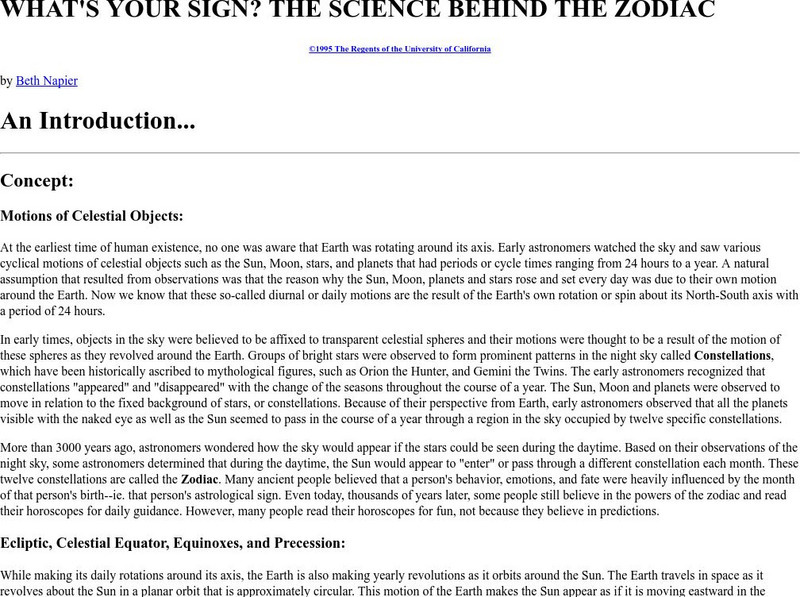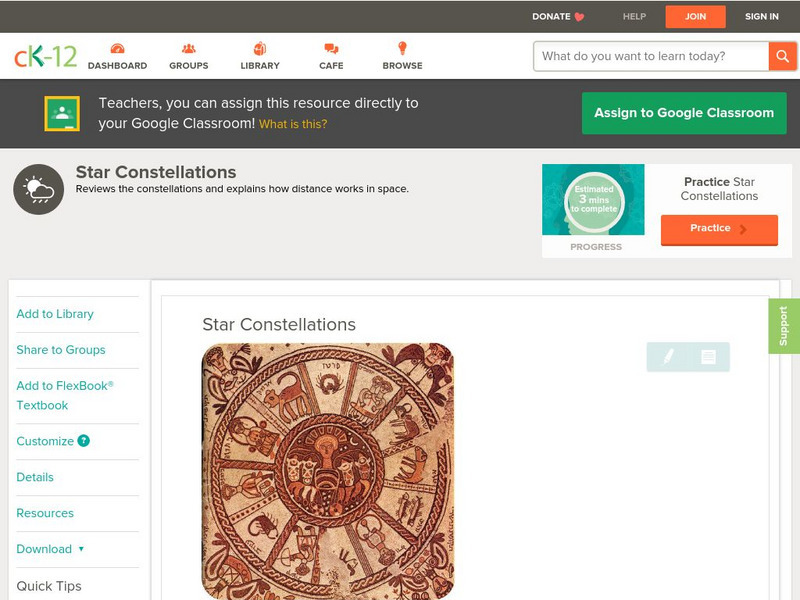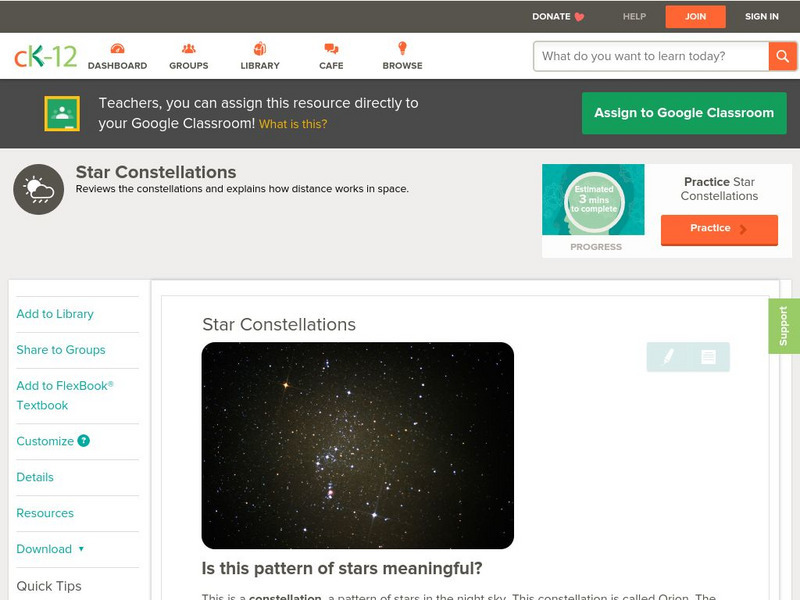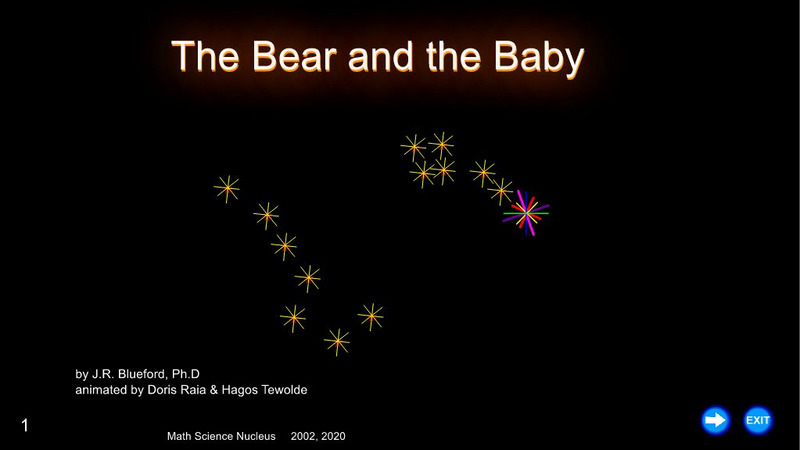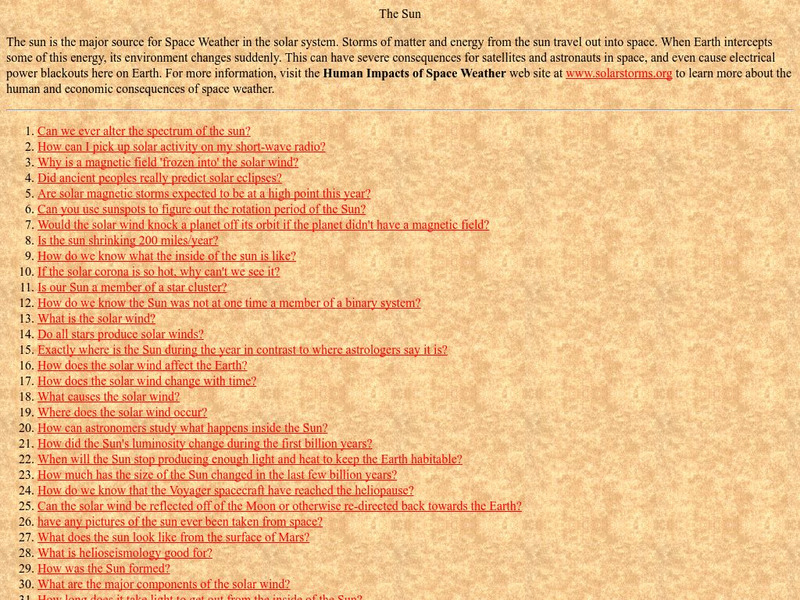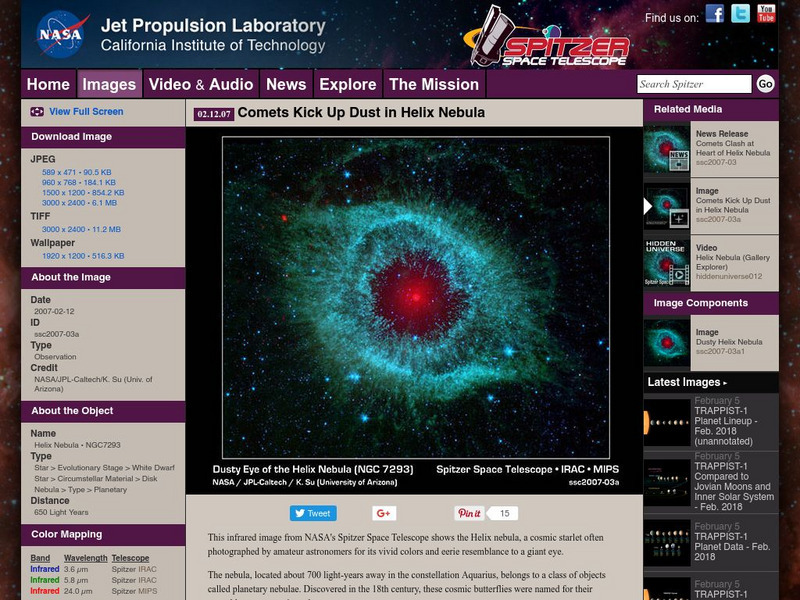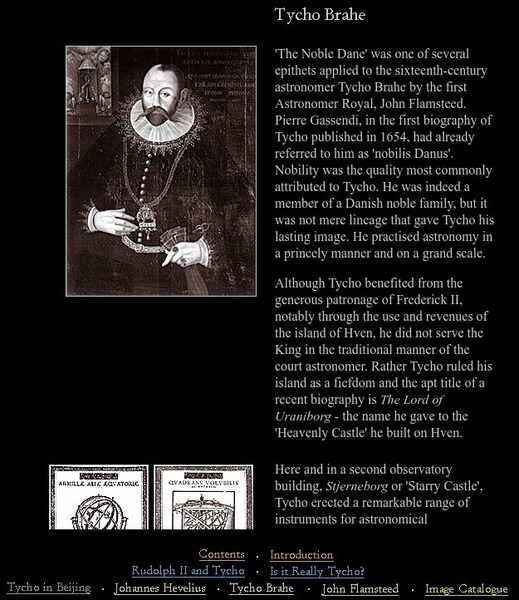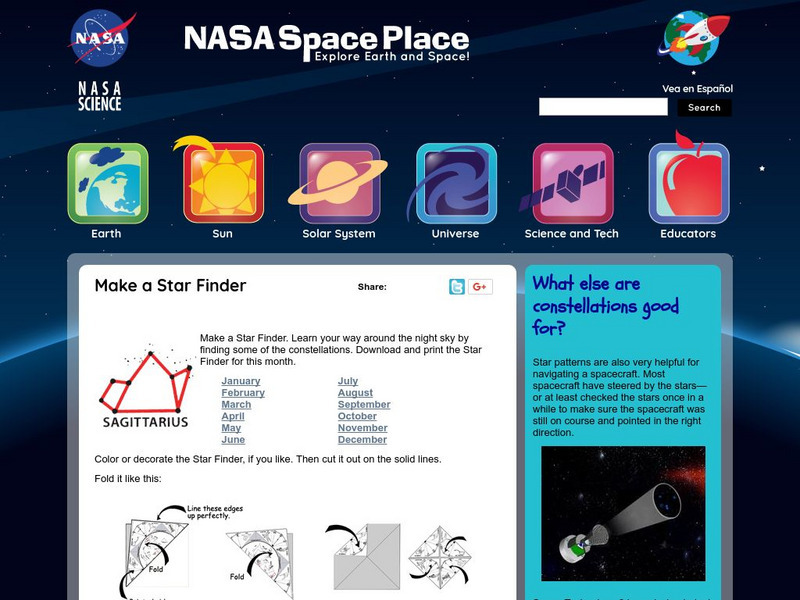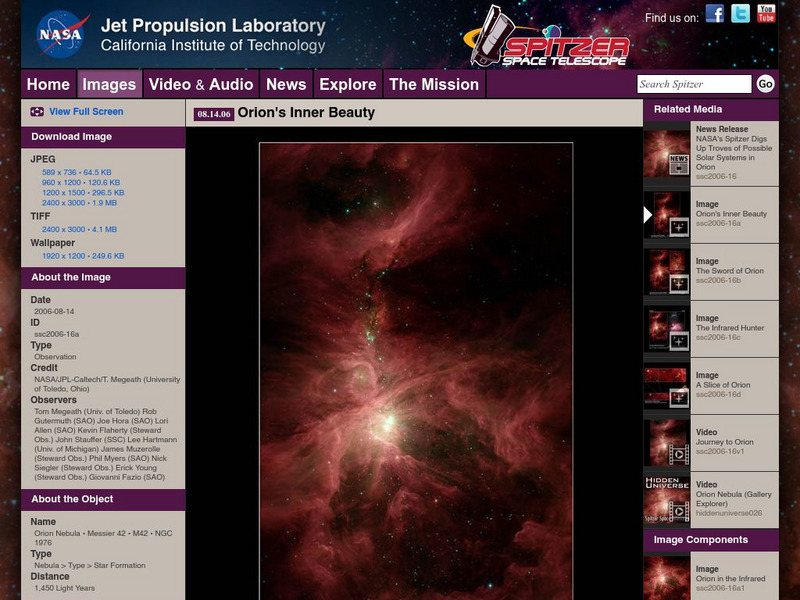Hi, what do you want to do?
Curated OER
Geometry in the Heavens
Ninth graders access a star worksheet and determine properties of polygons. In this investigative lesson plan students complete a worksheet and discuss myths.
Science Buddies
Science Buddies: Changing Constellations
Do you like to look up into the night sky? There are so many stars, it can be mind boggling. Some ancient people marked time by the changes in star patterns. We still use changes in constellation patterns to mark astronomical time. This...
University of California
Cse: What's Your Sign? The Science Behind the Zodiac
This paper presents the explanation behind the Zodiac signs. It discusses motions of celestial objects, the Plane of the Ecliptic, and the constellations of the Zodiac.
Science Buddies
Science Buddies: Using a Digital Camera to Measure Skyglow
This is a great project for someone that is interested in both stargazing and photography. Bright city lights and even the light of the full moon obscure the dimmest stars, which can make identifying constellations more difficult. This...
CK-12 Foundation
Ck 12: Earth Science: Star Constellations
[Free Registration/Login may be required to access all resource tools.] Overview of constellations.
CK-12 Foundation
Ck 12: Earth Science: Star Constellations
[Free Registration/Login may be required to access all resource tools.] Overview of constellations.
CK-12 Foundation
Ck 12: Fifth Grade Science: Earth Science: Stars
Investigate what constellations are and how to use light-years as a unit of distance in this module. Learn how to measure star distances in creative ways.
E-learning for Kids
E Learning for Kids: Science: Antarctica/ What Are the Different Parts of the Universe?
In this lesson, students learn about objects in the universe, including constellations, planets, meteors, asteroids, and comets.
E-learning for Kids
E Learning for Kids: Science: Antarctica: Describe the Life Cycle of Stars
Discover the stars with Peter. At his mom's research center, help Peter learn constellations and learn about characteristics of stars.
CK-12 Foundation
Ck 12: Earth Science: Star Constellations Study Guide
[Free Registration/Login may be required to access all resource tools.] This study guide summarizes key points about constellations. Includes a few questions to check for understanding.
Ducksters
Ducksters: Astronomy for Kids: Constellations
Kids learn about the constellations in the science of astronomy. These stars that form patterns when viewed from the Earth have been studied since ancient times.
Mocomi & Anibrain Digital Technologies
Mocomi: What Is a Constellation?
Constellations are patterns formed by groups of stars. Take a look at some of the familiar constellations.
NASA
Nasa: Spitzer Science Center: Story of Stellar Birth
Under the heading, "Story of Stellar Birth" this site examines specific details of an image displaying the apparent life cycles of young stars in the Cepheus constellation.
Science Struck
Science Struck: Simple Ideas for Your Kid's Solar System Project
Provides detailed instructions for how to help a student make a solar system model, and additional suggestions for making a constellation poster, making a model showing phases of the moon, and creating a solar system model to scale.
Thomas Jefferson National Accelerator Facility
Jefferson Lab: Science Crossword Puzzles Constellations [Pdf]
Find out what you know about constellations by completing this crossword puzzle!
Math Science Nucleus
Math Science Nucleus: The Bear and the Baby
This animation discusses the history of the constellations and the naming according to myths. The specific constellation dealt with in this animation is Ursa Major and Ursa Minor (the bear and the baby).
Other
Denver Museum of Nature and Science:telling Time at Night Using Big Dipper [Pdf]
Students examine how to tell time by using the stars and arithmetic. Some topics explored are the Big Dipper, the North Star, and the Little Dipper.
Australian Broadcasting Corporation
Australian Broadcasting Corporation: News in Science: Solar Flare Largest Ever Seen
From ABC News in Science, Larry O'Hanlon's article charts the discovery of the largest solar flare ever seen, occurring withint the constellation Pegasus. The article also discusses the consequences of such a large solar flare.
NASA
Nasa: Image Science Center: Ask the Space Scientist
A NASA space scientist provides 98 questions and answers about the sun, the center of our solar system.
California Institute of Technology
Spitzer Science Center: Helix Nebula
Under the heading, "Comets Kick up Dust in Helix Nebula" this site a particular nebula in the constellation Aquarius. In addition to an image, the site provides information on nebulas and star systems.
Georgia Department of Education
Ga Virtual Learning: Astronomy: The Earth
In this interactive tutorial students will learn what causes the seasons, diurnal cycles and how the constellations move through the sky. Learn we are able to see other planets and how astronomical events affected life on the Earth.
University of Oxford (UK)
Museum of the History of Science, Oxford: Tycho Brahe
This site contains information about Tycho Brahe as well as many pictures of him and his diagrams of the universe as he saw it.
NASA
Nasa: Make a Star Finder
Learning game and activity that teaches about the constellations by making a star finder to help locate them.
California Institute of Technology
Spitzer Science Center: Orion's Inner Beauty
Under the heading, "Orion's Inner Beauty" this site examines specific details of an image displaying the Orion nebula, which is stated to be "our closest massive star-making factory."







